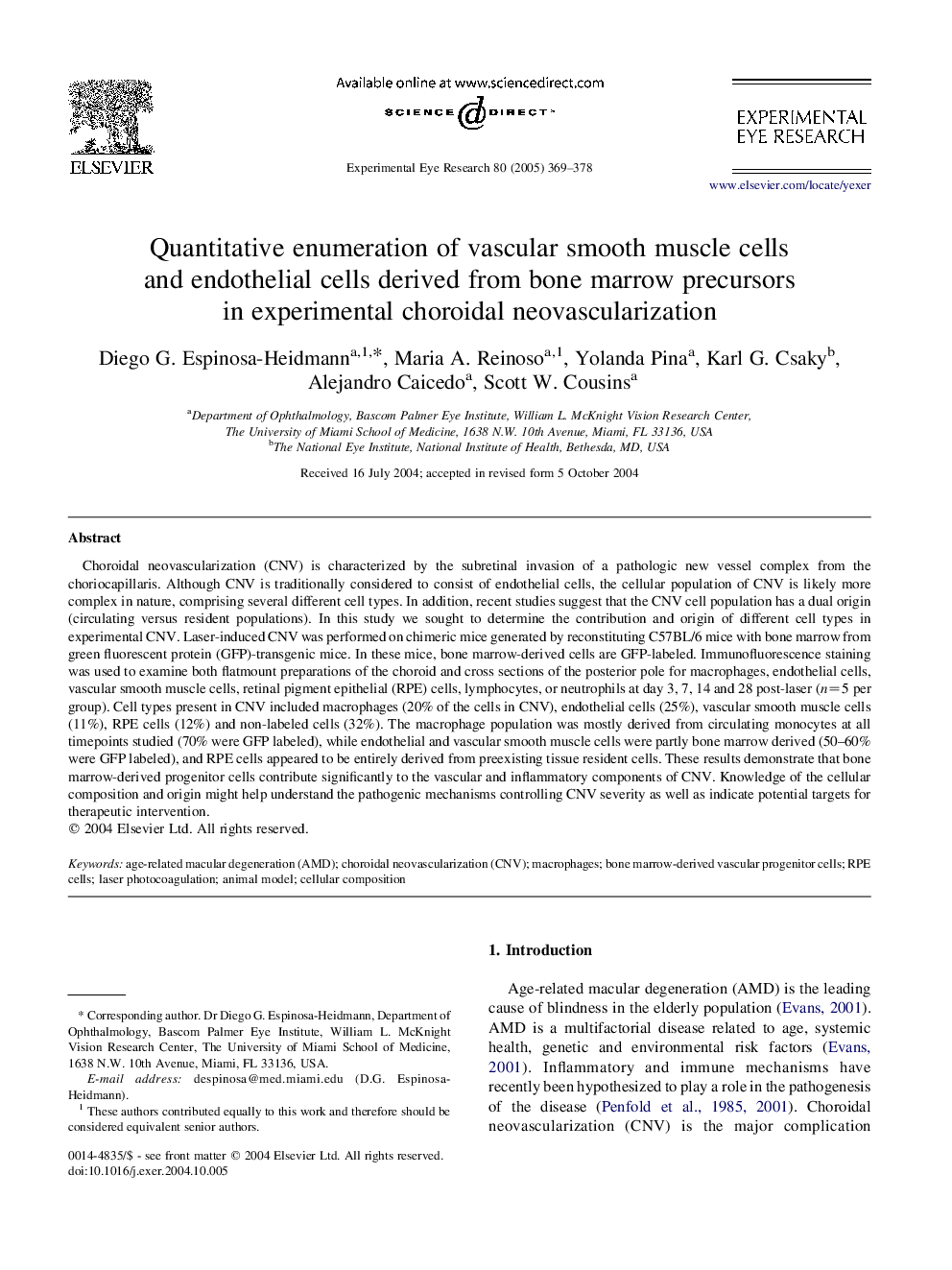| Article ID | Journal | Published Year | Pages | File Type |
|---|---|---|---|---|
| 9341605 | Experimental Eye Research | 2005 | 10 Pages |
Abstract
Choroidal neovascularization (CNV) is characterized by the subretinal invasion of a pathologic new vessel complex from the choriocapillaris. Although CNV is traditionally considered to consist of endothelial cells, the cellular population of CNV is likely more complex in nature, comprising several different cell types. In addition, recent studies suggest that the CNV cell population has a dual origin (circulating versus resident populations). In this study we sought to determine the contribution and origin of different cell types in experimental CNV. Laser-induced CNV was performed on chimeric mice generated by reconstituting C57BL/6 mice with bone marrow from green fluorescent protein (GFP)-transgenic mice. In these mice, bone marrow-derived cells are GFP-labeled. Immunofluorescence staining was used to examine both flatmount preparations of the choroid and cross sections of the posterior pole for macrophages, endothelial cells, vascular smooth muscle cells, retinal pigment epithelial (RPE) cells, lymphocytes, or neutrophils at day 3, 7, 14 and 28 post-laser (n=5 per group). Cell types present in CNV included macrophages (20% of the cells in CNV), endothelial cells (25%), vascular smooth muscle cells (11%), RPE cells (12%) and non-labeled cells (32%). The macrophage population was mostly derived from circulating monocytes at all timepoints studied (70% were GFP labeled), while endothelial and vascular smooth muscle cells were partly bone marrow derived (50-60% were GFP labeled), and RPE cells appeared to be entirely derived from preexisting tissue resident cells. These results demonstrate that bone marrow-derived progenitor cells contribute significantly to the vascular and inflammatory components of CNV. Knowledge of the cellular composition and origin might help understand the pathogenic mechanisms controlling CNV severity as well as indicate potential targets for therapeutic intervention.
Keywords
Related Topics
Life Sciences
Immunology and Microbiology
Immunology and Microbiology (General)
Authors
Diego G. Espinosa-Heidmann, Maria A. Reinoso, Yolanda Pina, Karl G. Csaky, Alejandro Caicedo, Scott W. Cousins,
